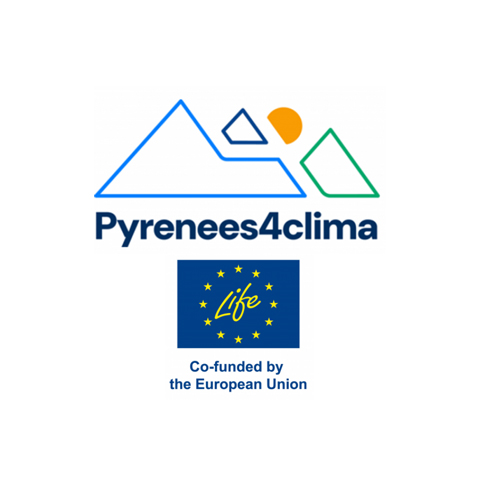Towards a climate-resilient cross-border mountain area in the Pyrenees

- Project start: 01/10/2023
- Project end: 30/04/2031
- Funders: European Commission
- Budget: Total: 19.518.018 € / NEIKER: 128.852 € (60% financed)
- Partners: Agence des Pyrénées, Conservatoire Botanique National Midi-Pyrénées, Météo France, CNRS, ACAP, CEREMA, Parc National des Pyrénées, AUDAP, NEO, ANA-CEN, AECT-Pyrénnées, CSIC, CREAF-UAB, ICGC, SMC, UPC, UB, Observatorio del Ebro, CITA, Fundesa, SEO-BIRDLIFE, GAN, NASUVINSA, NILSA, UNAV, UPNA, BC3, IHOBE, NATURKLIMA, NEIKER, FORESPIR, Red Pirineos Vivos, CTP-OPCC, AEMET, ARB-Oc Agencia Regional de la Biodiversité en Occitanie, AR+I Andorra Recerca e Innovació, MITECO-Reto Demográfico, Euroregión Pirineus Mediterranis, ONERC- Observatoire national sur les effets du réchauffement climatique, and SIVU du Massif du Pibeste Aoulhet.
General objective:
This project seeks the full implementation of the EPiCC, and more specifically of the EPiCC 2030 Operational Plan, in the Pyrenees (4 Spanish regions, 2 French regions and Andorra).
Specific objectives:
A new network to monitor the evolution of carbon storage of agricultural soils in mid-mountain areas (UPNA, NEIKER, ICGC).
Soils are a very sensitive component of the ecosystem to climate change, especially in mountain areas where they are very fragile and have a high carbon storage potential. Changes in soil management can be a solution for the protection of this resource, especially in agricultural areas. There will be a close linkage of this subtask with the pilot site established in subtask 3.3.2.1 of ecosystem and soil restoration with the development of the local seed sector.
The main objective of this task is the monitoring of soil carbon storage and the estimation of its evolution, considering climate change scenarios and different soil management practices.A soil C storage network will be established in Navarre, the Basque Country and Catalonia. During the development of the project, the participation in this network of another region of the Pyrenees will be encouraged. Best management practices to be applied in monitoring will be defined. The approach used to assess the actual and potential effect of different soil management practices will be based on the combination of existing soil C databases and a new generation. This will be done by collecting different databases from the pilot cases and identifying existing gaps. For example, CREAF, which is a partner in this project, will make its soil C database available to this network. In addition, they have offered to take new soil samples from the plots they will visit in WP4. Furthermore, standardisation and harmonisation of the different sampling and C determination techniques will be carried out. Samples will then be taken and analysed and a quantification will be made according to soil characteristics, climate and management.
During the project, specific determinations will be made in terms of organic C storage. The information generated by this network will be added to a database that will feed the general database of the territories of interest. A map of soil C storage associated with these practices and possible changes in relation to projected CC scenarios (defined in WP2) will be mapped through Bayesian spatio-temporal modelling: The information gathered in the previous actions will allow the development of a cartography that will be presented in the viewer generated in the Governance Work Package. A novel and transferable methodology linking the considered land uses, CC scenarios and soil organic C storage, which can be used to make predictions and recommendations.



